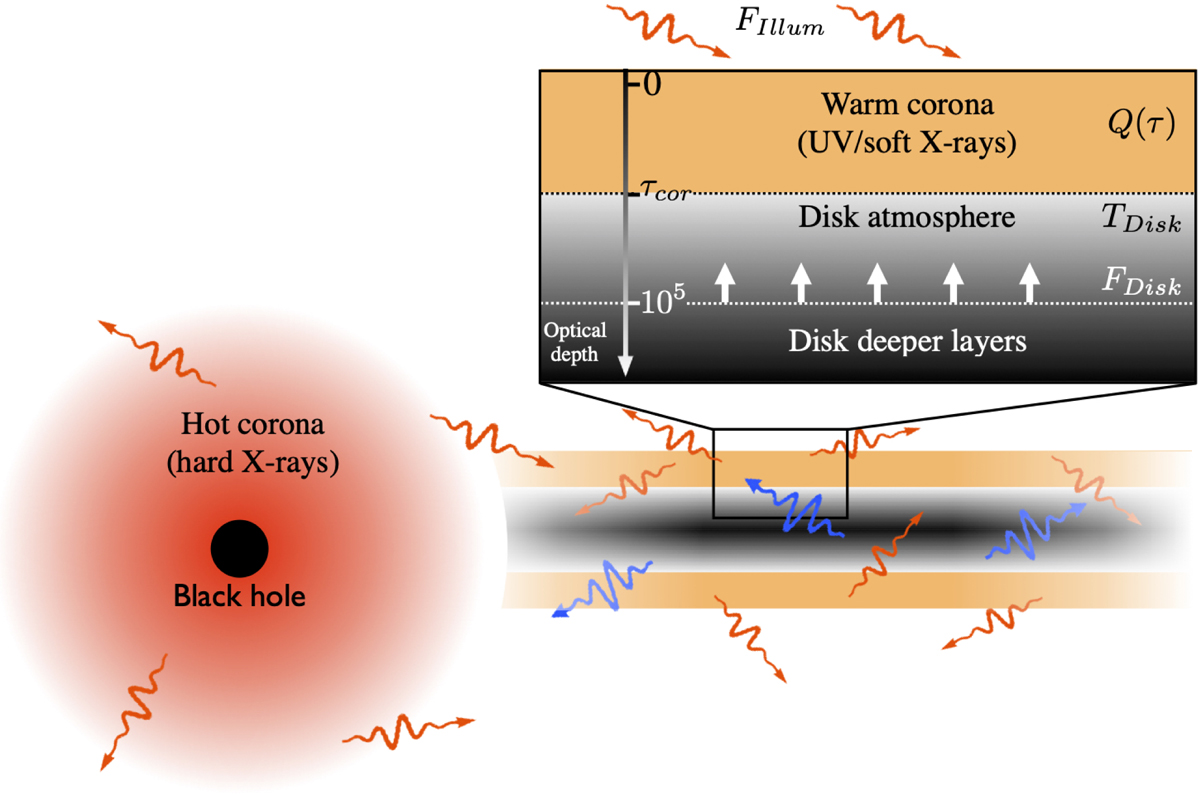Fig. 1.

Sketch of the two coronae approach. A hot (kT ∼ 100 keV) and optically thin (τ ∼ 1) corona (in red) is present in the inner parts of the accretion flow close to the black hole. This produces the hard X-ray emission through Comptonization of the soft photons coming from the outer part of the flow. The outer accretion flow is a vertically structured accretion disk (a zoom is shown in the figure) with cold and optically thick matter in the deeper layers (in black), characterized by a temperature Tbb and threaded by a vertical radiative flux Fdisk, while the upper layers (in orange) are composed of a warm (kT ∼ 1 keV) and optically thick (τcor ∼ 10–20) corona possessing a source of internal heating power Q(τ). The warm corona is also illuminated from above by an illumination flux FIllum produced by the hot corona. This sketch is partly inspired from Różańska et al. (2015).
Current usage metrics show cumulative count of Article Views (full-text article views including HTML views, PDF and ePub downloads, according to the available data) and Abstracts Views on Vision4Press platform.
Data correspond to usage on the plateform after 2015. The current usage metrics is available 48-96 hours after online publication and is updated daily on week days.
Initial download of the metrics may take a while.


